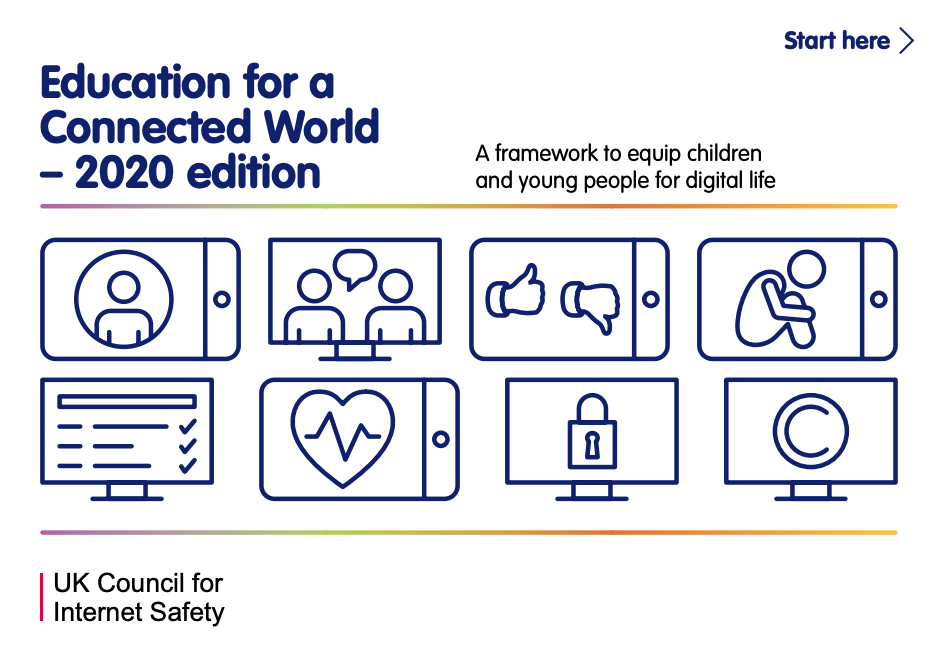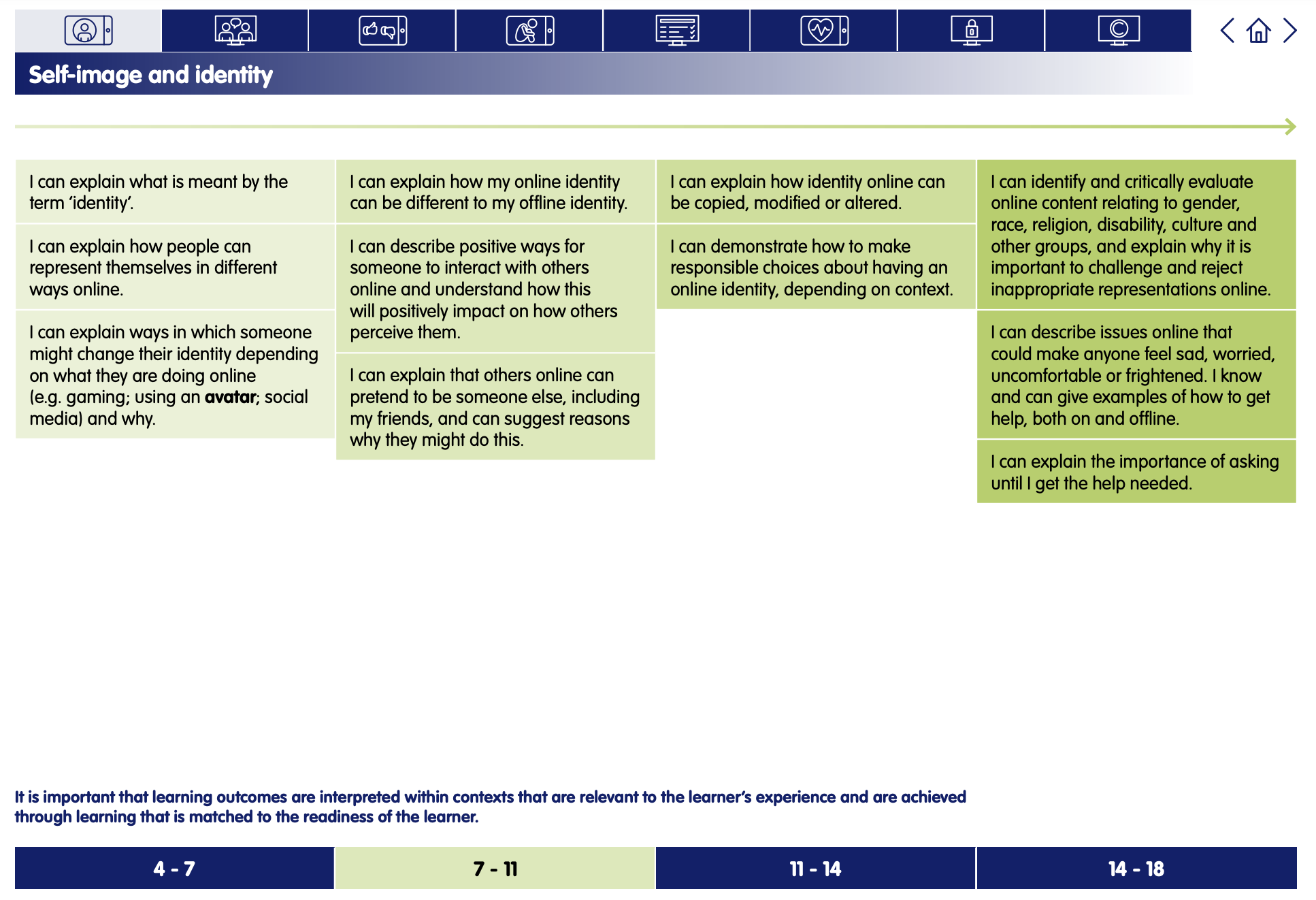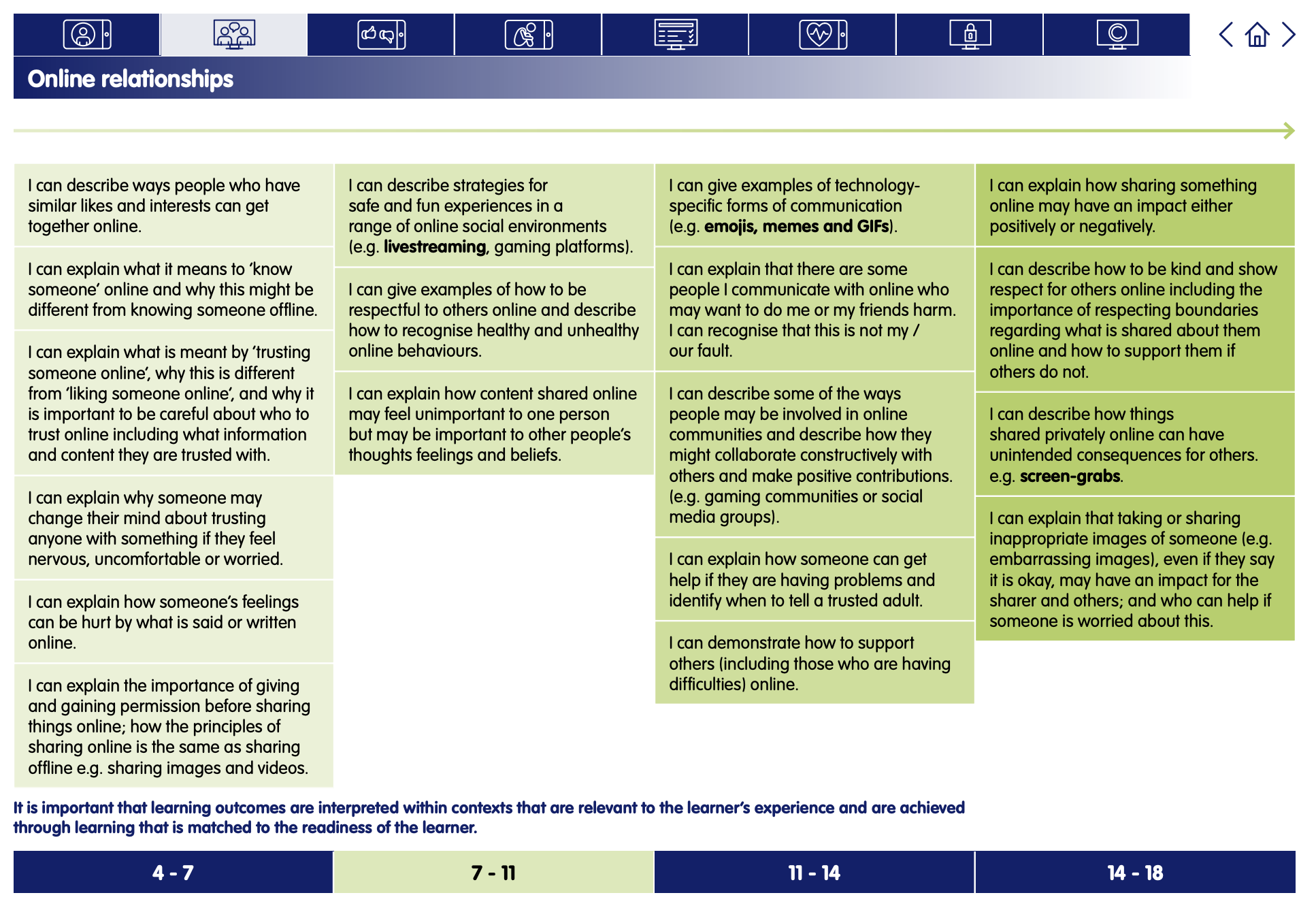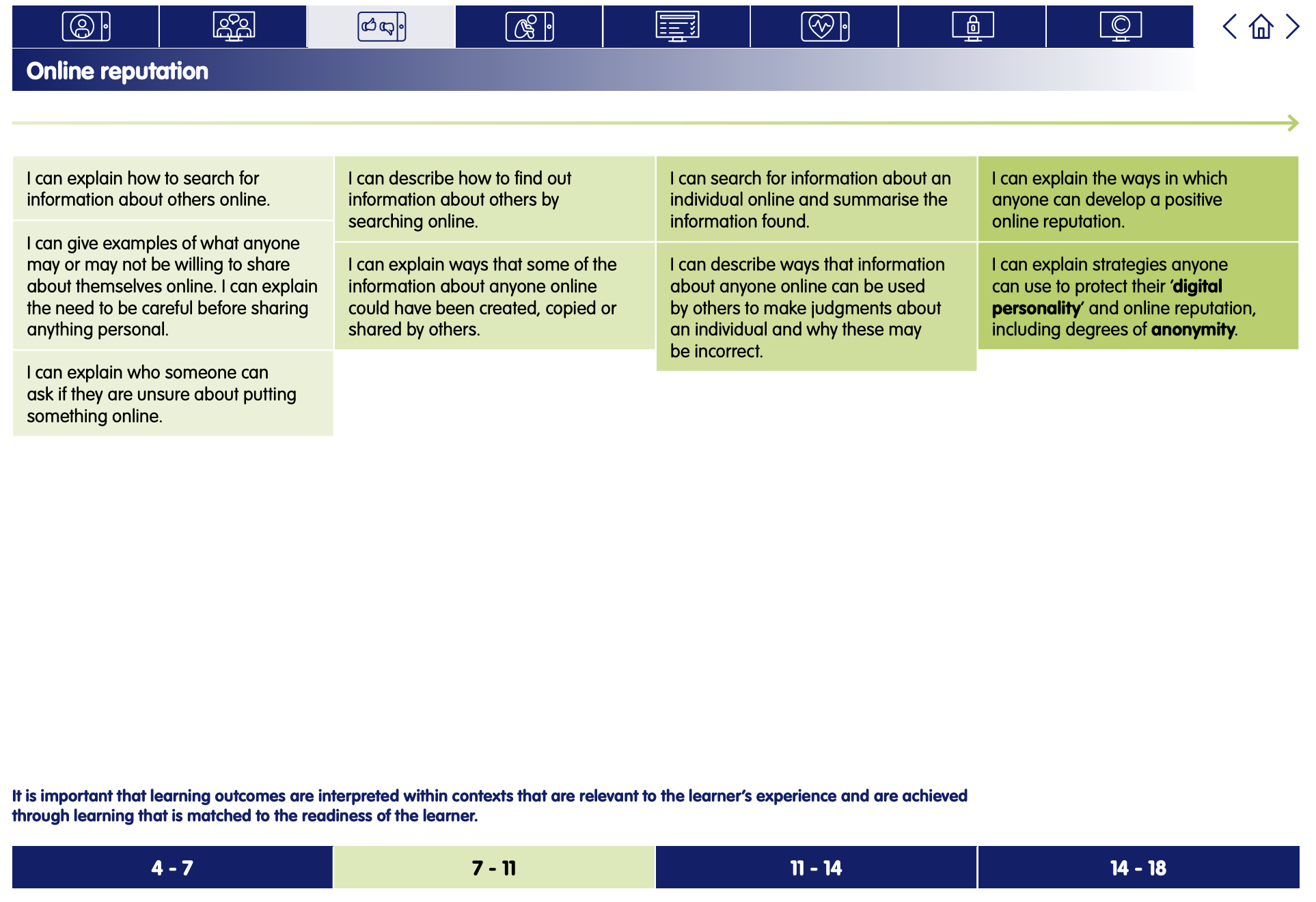Our Online Tracks
Digital Literacy and Online Safety (Y5) - Lesson 3
A note about this lesson

This lesson is taken from Common Sense Education’s excellent Digital Citizenship curriculum. Their resources are shared for free under A Creative Commons Attribution- NonCommercial- NoDerivatives 4.0 International License.
You can find the original resources HERE.
Objectives
- Define the term "digital footprint" and identify the online activities that contribute to it.
- Identify ways they are -- and are not -- in control of their digital footprint.
- Understand what responsibilities they have for the digital footprints of themselves and others.
Lesson 1 - My Media Choices
Lesson 2 - Private and Personal Information
Lesson 3 - Our Online Tracks
Lesson 4 - Keeping Games Fun and Friendly
Lesson 5 - Be a Super Digital Citizen
Lesson 6 - A Creator's Rights and Responsibilities
Links to Education for a Connected World.
This lesson from Common Sense Media's Digital Citizenship curriculum links to the following strands from the Self-image and identity, Online relationships and Online reputation sections of the Education for a Connected World framework.
Introduction - Follow That Track!
Your digital footprint can affect your online reputation for a long time. But kids don't always realise that digital footprints aren't just a personal matter. Show your students how they can contribute to a positive digital reputation, both for themselves and for others.
Before the lesson: As an optional activity before the lesson, have students play the Share Jumper game in Digital Passport™ by Common Sense Education. This will help introduce key concepts of this lesson. To see more, check out the Digital Passport Educator Guide.
Project image 1 of the animal footprint. Ask: What do you notice in this image? What can you infer about the animal that left this? Take turns sharing your idea with your partner. If necessary, clarify that an inference is an educated guess you make based on evidence. (Slide 4)
Invite students to share their responses. Answers may include it had paws, it walked on land, or it had claws. Push students to make deeper inferences about the animal's life based on those facts; for example: What did the animal eat? What did it look like?
Project image 2 of the fossil. Ask: What do you notice in this image? What can you infer about this animal? Take turns sharing your ideas with your partner. (Slide 5)
Invite students to share their responses. Explain to students that this is a fossil. Fossils are parts of an animal that are saved and preserved in the earth for millions of years.
Say: These images are both examples of how animals leave imprints on their world, even after they're gone. We can learn things about animals based on those imprints. In some cases, like with fossils, those imprints last forever. What about humans? What imprints do we leave on the world?
Invite students to share their responses. Answers may include our bones, our footprints, buildings, etc.
Say: In addition to the physical footprints we leave on the earth, we also leave a footprint when we're online. And that footprint, just like a fossil, can tell a lot about us and can last for a very long time. This is called a digital footprint, and it is a record of what we do online, including the sites we visit and the things we post. It can also include things that others post, like pictures of us or comments about us. Not everything in our footprint is under our control. (Slide 6)
Analyse - Camilla’s Footprint
Distribute the Camilla's Footprint Student Handout. Call on a student to read the directions and instruct pairs to work together to complete the handout. Allow students 10 minutes to work. (Slide 7)
Call on groups to share their answers from the handout. For the last two, clarify that although Camilla has control over whether she plays the video game and hangs out with her friends, she does not have control over whether the top scorers and the photo get posted.
Say: Camilla's digital footprint tells us a lot about her, and it involves things that are both in and out of her control. Her footprint is like a fossil in that it will last for a very long time. Even if she tries to delete the activity, it will still be stored somewhere and be accessible to someone.
Evaluate - On Your Honour
Say: Given that our digital footprints last a long time and that we're not always in control of what becomes part of our footprint, there are some responsibilities we have when it comes to being online. A responsibility is something that we should think about before we act. In this case, we have a responsibility to ourselves and to others before we do something online. (Slide 8)
Ask: What do you think some of our responsibilities are for being online? Both to ourselves and to others? Take turns sharing your ideas with your partner. (Slide 9)
Call on students to share their answers and capture them in the chart. (Slide 10) Possible responses include:

Have students complete the Lesson Quiz. Send home the Family Activity and Family Tips.
Extension Activity:
Give the students time to write a letter to their family and community members (coaches, babysitters, counsellors, etc.). Refer the students to the responsibilities captured in On Your Honour, step 2. The letters should include:
- A description of a digital footprint.
- An explanation that sometimes people have control over their footprint and sometimes they do not.
- Two rules the student would like his or her family and community to agree to follow in their digital activities to help protect the student's digital footprint. And, two rules the student will agree to follow to protect family members' digital footprints.




